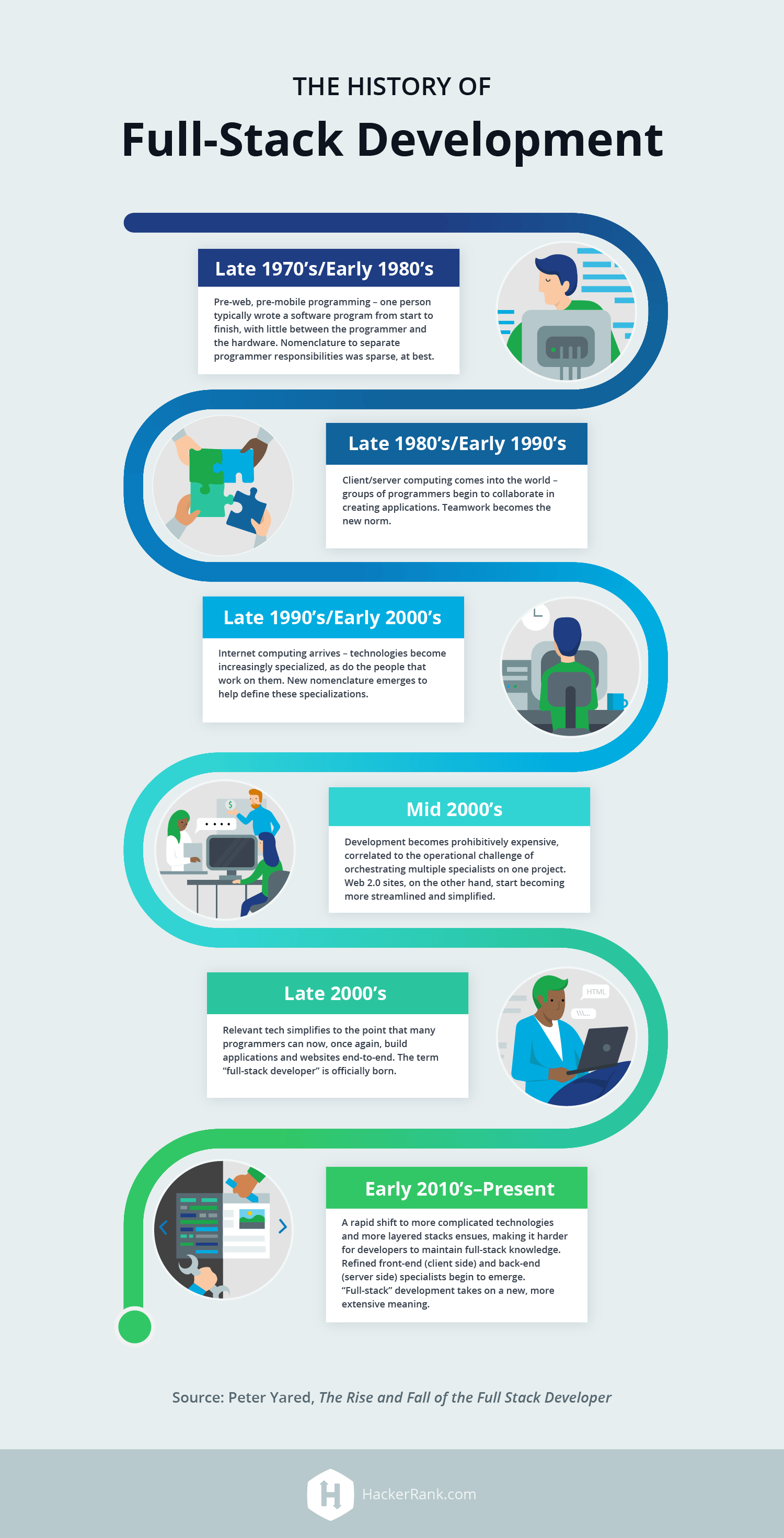Index Surge: Amplifying Your Insights
Stay updated with the latest trends and news across various industries.
Full-Stack Development: Where Front Meets Back
Discover the magic of full-stack development and unlock the secrets where front-end creativity meets back-end power!
Understanding the Full-Stack Development Landscape: Key Technologies and Tools
Full-stack development encompasses both front-end and back-end technologies, enabling developers to work on all aspects of a web application. Understanding the full-stack development landscape requires familiarity with major frameworks and languages such as JavaScript, HTML, and CSS for the front end, complemented by back-end technologies like Node.js, Python, or Ruby on Rails. Additionally, knowledge of databases (like MySQL or MongoDB) and server management tools is crucial for a well-rounded full-stack developer.
To effectively navigate the full-stack development landscape, it's essential to explore key tools and technologies that enhance productivity and streamline workflows. Popular tools include React and Angular for front-end development, which help create dynamic and responsive user interfaces. On the server side, frameworks like Express.js and Django provide robust environments for application logic. Furthermore, utilizing version control systems like Git ensures seamless collaboration and code management, making it a necessary skill for any aspiring full-stack developer.

How to Transition from Front-End to Full-Stack Developer: A Comprehensive Guide
Transitioning from a front-end developer to a full-stack developer can be an exciting journey that opens up many new opportunities in the tech industry. To begin, it's essential to build a strong foundation in back-end technologies. Start by learning a back-end programming language such as Node.js, Python, or Ruby. Familiarize yourself with database management systems like MySQL, PostgreSQL, or MongoDB. Moreover, understanding APIs and how to create RESTful services will enhance your capability to handle both client-side and server-side operations effectively.
As you progress, consider working on projects that challenge your skills in both front-end and back-end development. You can utilize platforms like GitHub to showcase your work, allowing potential employers to see your capabilities as a full-stack developer. Additionally, participating in coding bootcamps or online courses will help you strengthen your expertise. Lastly, don’t forget to network with professionals in the field, as building connections can often lead to mentorship opportunities and valuable job prospects.
Common Challenges in Full-Stack Development and How to Overcome Them
Full-stack development presents a myriad of challenges, primarily due to the need for developers to be adept in both front-end and back-end technologies. Some common issues include technology overload, where developers feel overwhelmed by the vast number of frameworks and tools available. This can lead to decision fatigue and impact productivity. Additionally, ensuring seamless communication between front-end and back-end components can be tricky, as discrepancies in data handling and API integration may arise, causing delays. To tackle these challenges, developers should focus on mastering a few core technologies and progressively expanding their skill set, thereby avoiding the paralysis of choice.
Another significant challenge is maintaining code quality across different layers of the application. Full-stack developers often juggle multiple responsibilities, which can lead to inconsistent coding practices and technical debt. The implementation of best practices such as code reviews, unit testing, and consistent documentation is vital in addressing these issues. Moreover, utilizing version control systems like Git can help streamline collaboration and enhance code quality over time. By prioritizing these practices, developers can overcome the challenges associated with full-stack development and create maintainable, scalable applications.